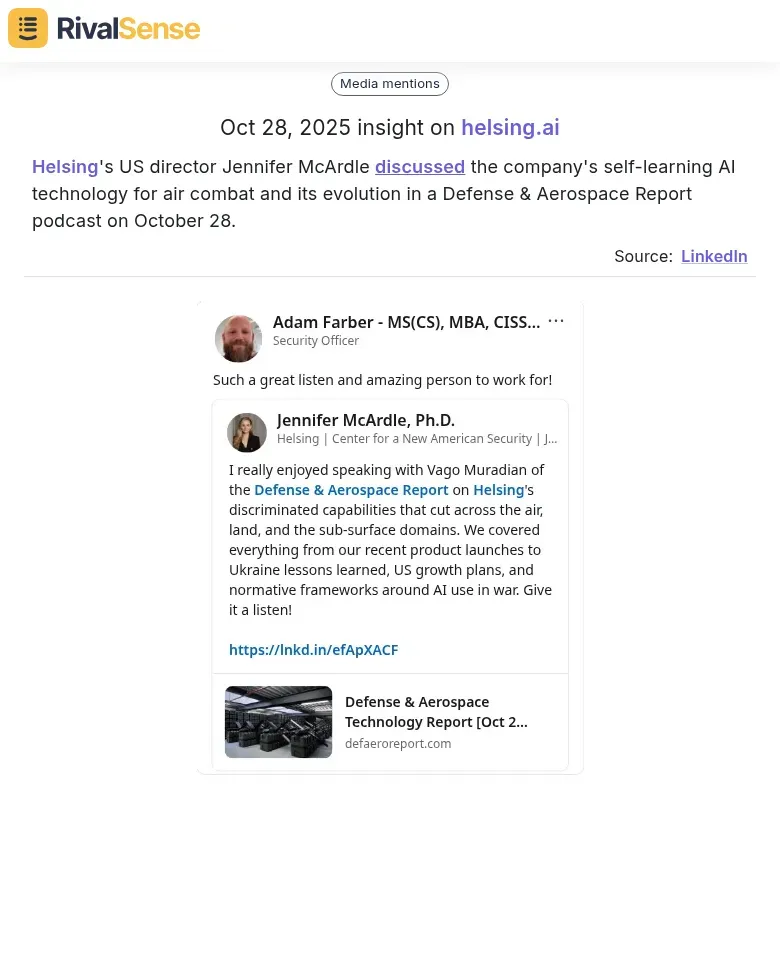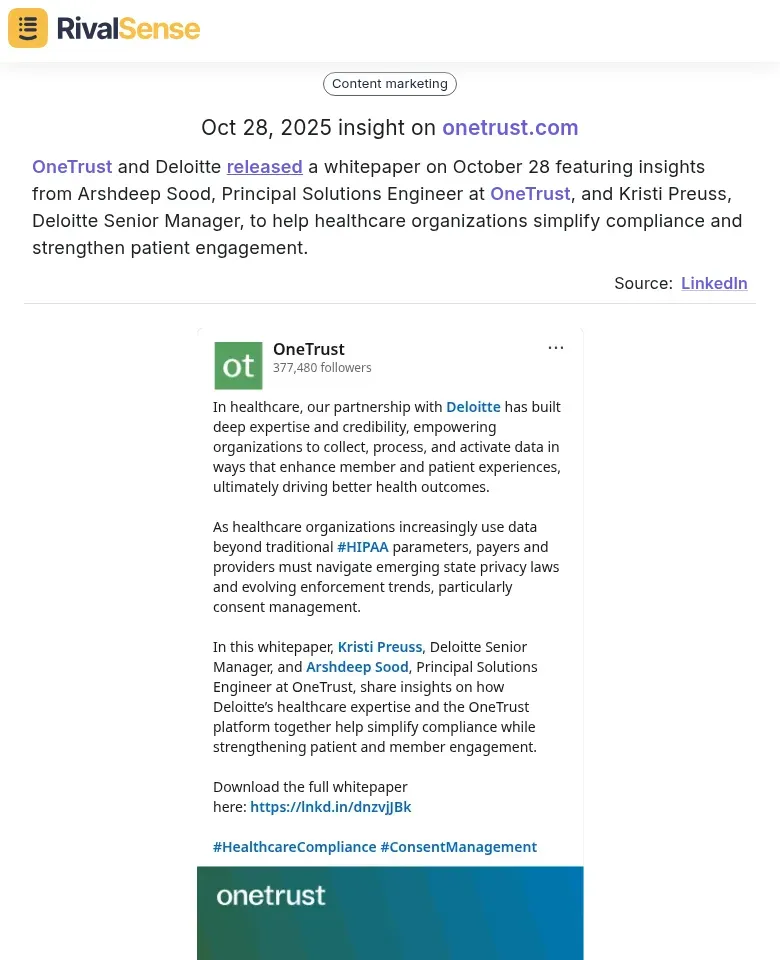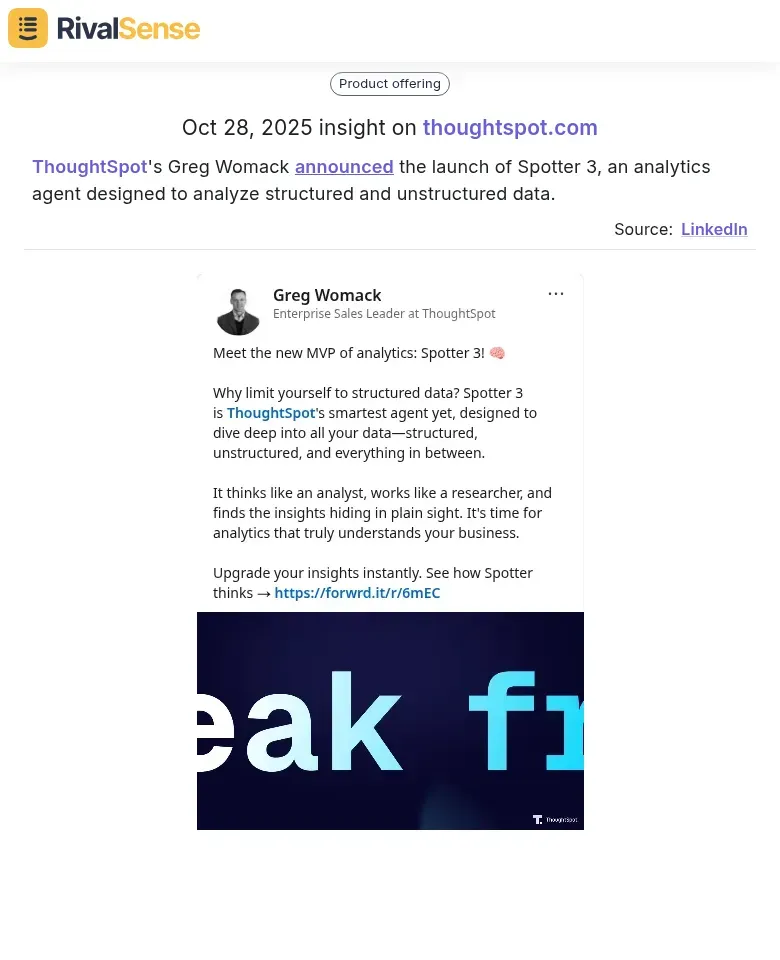LinkedIn Trend Analysis: Uncover Competitor Pricing Advantages
LinkedIn is a powerful platform for gaining real-time insights into competitor strategies. By monitoring trends and activities, you can uncover hidden pricing advantages that directly impact your business decisions. This approach helps you stay agile and responsive in a dynamic market environment.
LinkedIn serves as a goldmine for competitive pricing intelligence. Tracking competitor pages, industry groups, and executive posts can reveal pricing strategies before official announcements. Public discussions about 'value propositions,' customer testimonials mentioning ROI, and job postings for pricing analysts often highlight hidden advantages. For instance, when a competitor emphasizes 'flexible pricing tiers' in a post, it may signal upcoming discount strategies.
🔍 Steps to Get Started:
- Track competitor LinkedIn pages for keywords like 'plans,' 'tiers,' or 'discounts.'
- Join industry groups where customers discuss costs and value.
- Analyze executive announcements for hints on pricing shifts, such as mentions of 'new packages' or 'enhanced affordability.'
A case study from a SaaS leader shows how they adjusted prices after spotting rivals' LinkedIn posts about 'simplified pricing,' leading to a 15% market share gain. Use these insights to benchmark your pricing and maintain competitiveness.
Analyzing Product Evolution and Technology Announcements
Monitoring competitors' product launches and updates on LinkedIn provides crucial insights into their pricing strategies. Technological advancements often justify premium pricing tiers, allowing you to anticipate market shifts and adjust your approach accordingly.
For example, when companies roll out advanced features like AI-powered tools, they frequently introduce higher-priced plans. Tracking these patterns helps you understand how innovation cycles influence pricing. A recent RivalSense insight highlighted Helsing's US director Jennifer McArdle discussing self-learning AI technology for air combat in a podcast. Monitoring such technology announcements is valuable because it reveals how competitors position premium features, which often correlate with pricing increases and can inform your own feature-based pricing models.

💡 Practical Steps:
- Create alerts for competitor product updates and tech blogs.
- Analyze feature release timelines to anticipate pricing changes.
- Compare how competitors position AI or advanced features on their pricing pages.
- Adjust your strategy before competitors capitalize on new technology.
By understanding these evolution cycles, you can align your pricing with emerging market expectations and avoid being left behind.
Extracting Insights from Partnerships and Collaborations
Partnerships and collaborations on LinkedIn often reveal hidden pricing advantages through service bundling and enhanced credibility. These alliances can signal shifts in pricing models, especially in regulated or competitive industries.
Joint ventures and co-authored content, such as whitepapers, indicate how companies bundle services to justify premium fees. For instance, a cybersecurity firm partnering with a compliance platform might offer bundled audits at higher prices. A RivalSense insight showed OneTrust and Deloitte releasing a whitepaper to help healthcare organizations with compliance and patient engagement. This type of partnership insight is valuable because it highlights how collaborations can drive compliance-driven pricing models and increase perceived value, allowing you to anticipate and respond to competitive moves.

📋 Actionable Checklist:
- Monitor LinkedIn for partnership posts and whitepaper launches.
- Map bundled services to competitor pricing pages.
- Note credibility indicators, like endorsements from top firms.
- Use tools like RivalSense to automate tracking and spot patterns early.
This approach uncovers value-add strategies that competitors use to justify price hikes, helping you refine your own offerings.
Leveraging Executive Thought Leadership for Pricing Clues
Executive thought leadership on LinkedIn offers subtle yet powerful insights into competitor pricing strategies. By analyzing interviews, podcasts, and posts from key leaders, you can glean hints about cost structures, target markets, and value justifications.
This content often builds brand authority, which increases price elasticity as customers perceive higher value. For example, if a CEO discusses 'efficiency gains,' it may indicate lower operational costs enabling competitive pricing. Similarly, emphasizing 'enterprise-grade security' supports premium price points.
👥 Practical Steps:
- Monitor key executives' LinkedIn activity weekly.
- Note recurring themes like cost savings or unique features.
- Compare their messaging to your pricing strategy for gaps.
- Use insights to refine your value proposition and justify premiums.
By staying attuned to executive narratives, you can align your pricing with market perceptions and stay competitive.
Monitoring Data and Analytics Innovations for Competitive Edges
Tracking competitors' data and analytics innovations on LinkedIn is essential for understanding their pricing strategies. Advanced capabilities, such as AI-driven data processing, often command premium prices and create upsell opportunities.
For instance, when a rival launches features for analyzing unstructured data, they likely introduce higher-priced tiers. A RivalSense insight captured ThoughtSpot's Greg Womack announcing the launch of Spotter 3, an analytics agent for structured and unstructured data. Monitoring such data innovations is valuable because it shows how competitors justify price hikes with advanced capabilities, helping you benchmark your pricing and identify gaps for improvement.

📊 Tips for Implementation:
- Track competitor product updates via blogs, release notes, and social media.
- Analyze feature tiers to infer pricing—basic plans for structured data, premium for AI-driven processing.
- Benchmark your pricing against competitors; if they charge 20% more for similar features, adjust your model accordingly.
- Focus on how data innovations justify price increases to maintain competitive margins.
Regularly reviewing these benchmarks ensures you stay agile and responsive to market trends.
Actionable Strategies to Implement Findings
Transforming LinkedIn trend analysis into tangible pricing advantages requires a structured approach. By implementing systematic tracking and dynamic integration, you can turn insights into competitive edges that drive growth.
Start by establishing a consistent monitoring framework and measuring the impact of your adjustments. This ensures that your pricing strategy remains aligned with market dynamics and customer expectations.
🚀 Strategies to Adopt:
- Systematic Tracking Framework: Set up a weekly cadence using LinkedIn Sales Navigator and social listening tools. Track competitor job postings, content engagement, and customer testimonials mentioning pricing. Use Google Alerts for competitor mentions and industry discussions.
- Dynamic Pricing Integration: Feed LinkedIn insights into your pricing models. If competitors hire for premium roles, they may plan price increases. Adjust your tiers proactively—e.g., launch a mid-tier plan below market rate to capture price-sensitive customers.
- Impact Measurement: Define KPIs like conversion rates, acquisition costs, and market share shifts. Conduct A/B testing on pricing pages informed by competitor messaging, and validate trends with customer feedback.
✅ Weekly Checklist:
- Audit competitor content on LinkedIn.
- Review pricing strategy monthly.
- Assess market positioning quarterly.
By following these steps, you can leverage LinkedIn data to refine your pricing and maintain a competitive advantage.
Ready to simplify your competitor tracking? Try RivalSense for free at https://rivalsense.co/ and get your first competitor report today to tackle the challenges outlined in this post!
📚 Read more
👉 Quick Tips: Key Account Assessment Hacks for Construction Leaders
👉 Data-Driven Competitor Insights: Hiring and Layoff Trends
👉 Real-World Competitor Analysis: Tracking ThoughtSpot's Product Evolution
👉 How to Track and Benchmark Competitor Customer Satisfaction: A Strategic Guide
👉 Optimize Smart Building Integration with Key Account Tracking Apps
